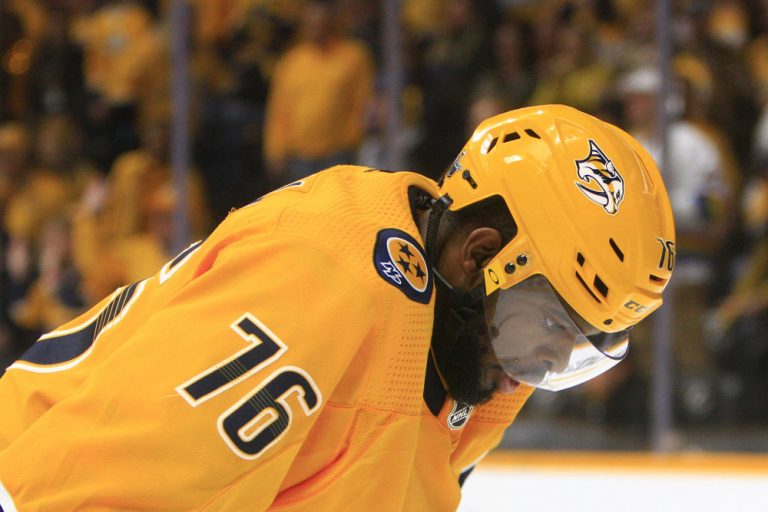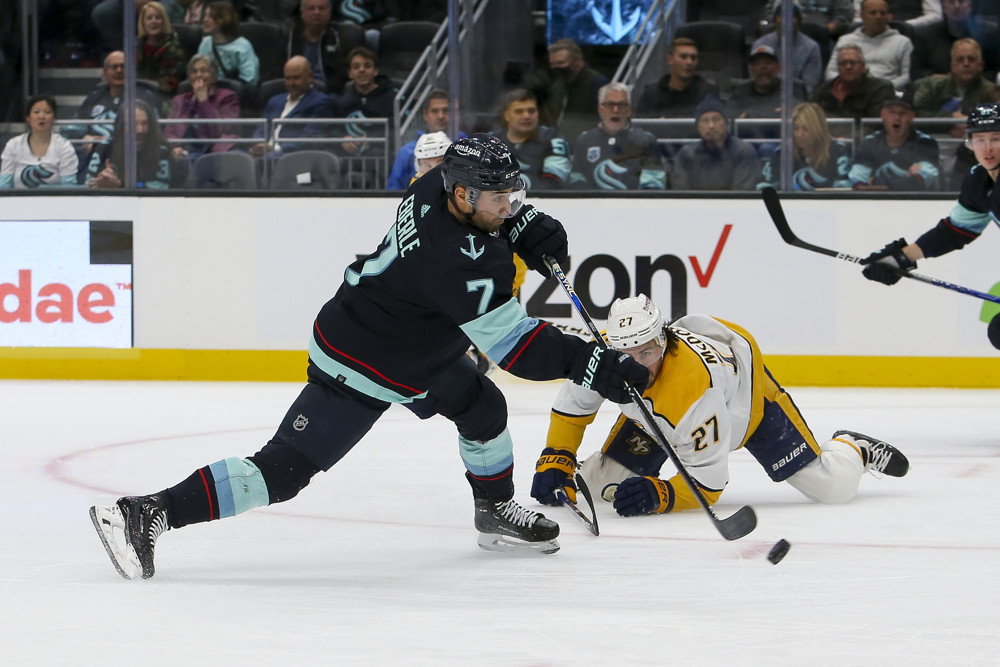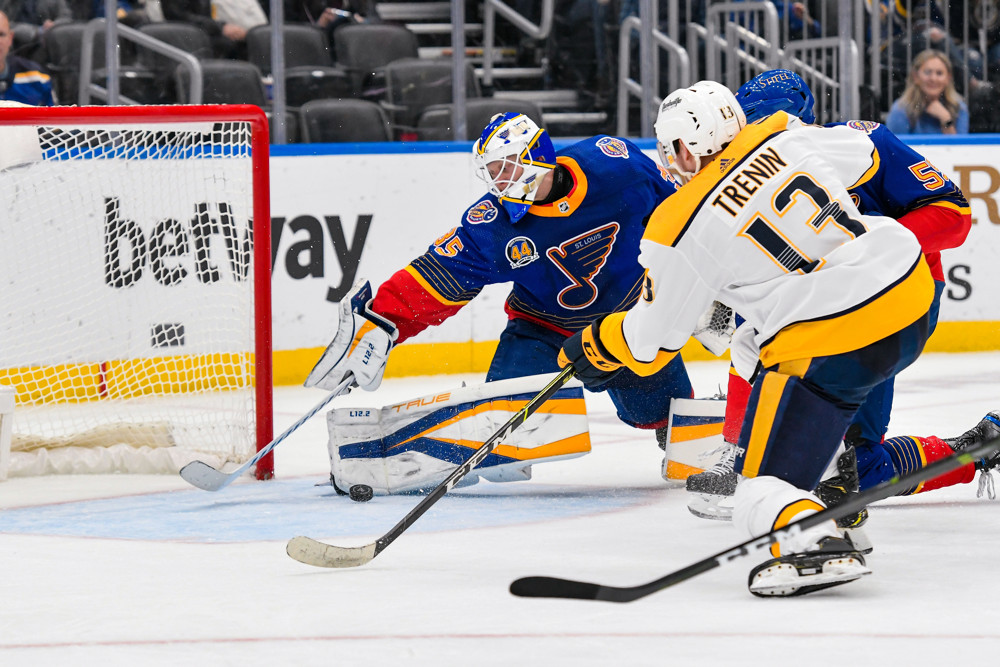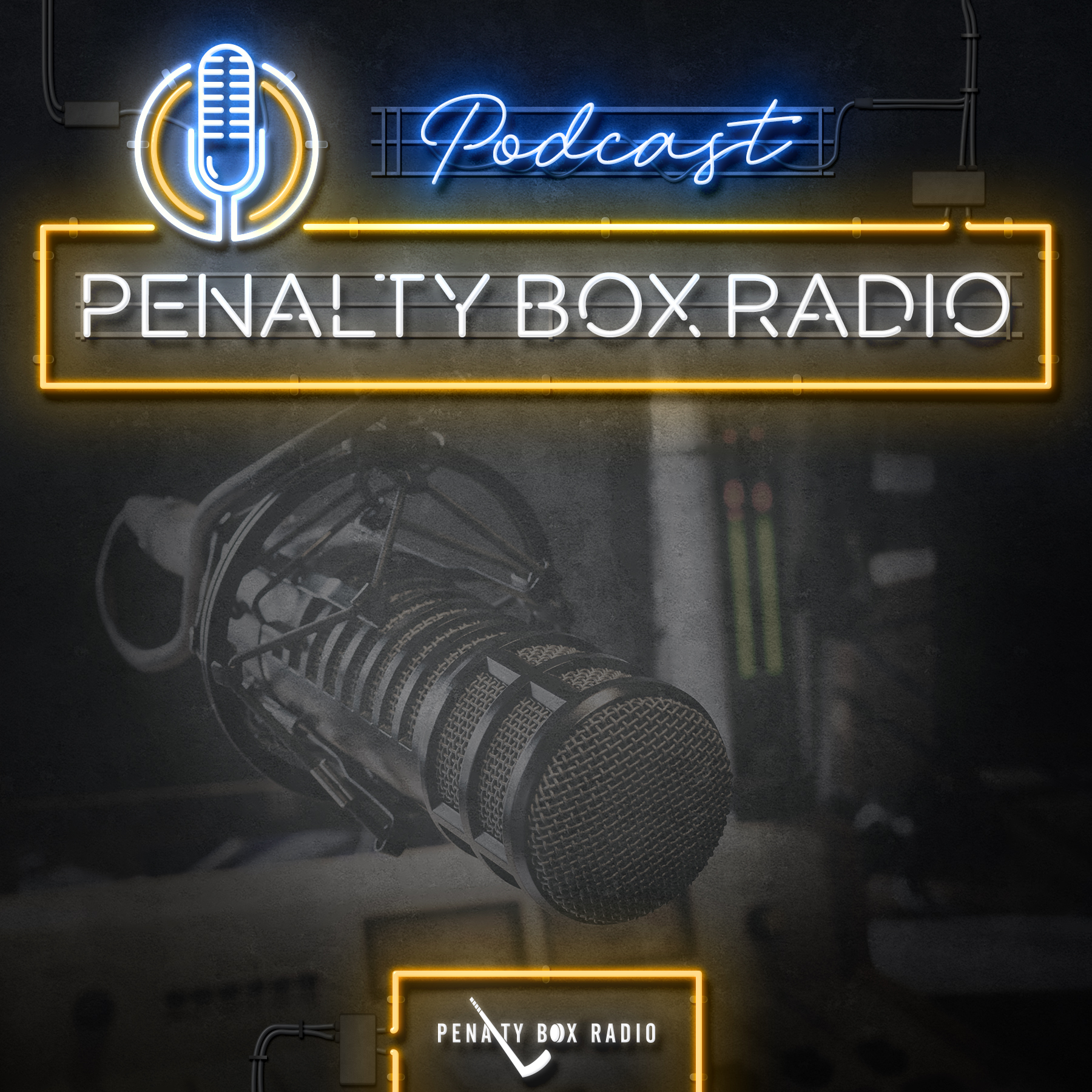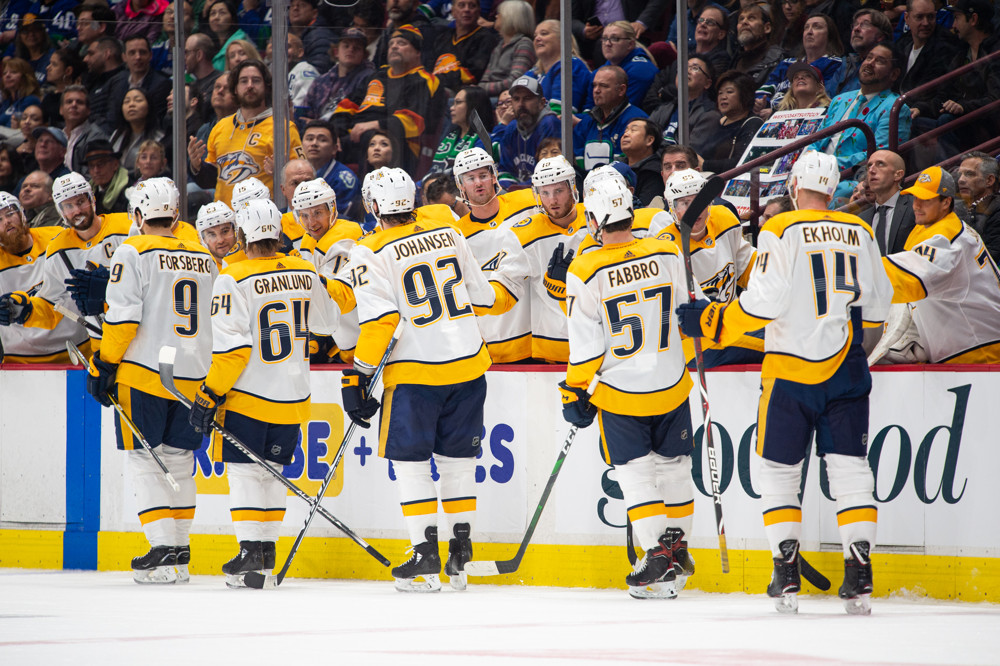
Hockey is a business. Players that you love are constantly being traded away, and players you despise are somehow always rumored to be your number one free agent target. The life of a fan is somehow equal parts fun and terror as you watch your general manager make the decisions he thinks will win a cup. One such decision came on Saturday, June 22nd when the Nashville Predators traded away P.K. Subban for just about “nothing.”
I shouldn’t say nothing, the Predators are in the hunt for big-name free agent, Matt Duchene, this summer and cap needed to be cleared. The Predators had about seven million dollars to use before Subban was moved, not enough considering that Duchene is rumored to command at least nine million per year. So changes had to be made and Subban was the one to get the ax.

As you can probably imagine from my Twitter and analytical background, I was not a fan of this move. But I’m not going to discuss why trading Subban was a mistake. Instead, I want to focus on other ways the Predators could’ve cleared cap space to make room for Duchene, and how these ways were better than moving their best defensemen.
Picking The Bones
I forget about him all the time, but Nick Bonino would’ve been a great candidate to be traded (and maybe he still will be). His 4.1 million dollar cap hit over the next two years wouldn’t have been a huge deterrent to teams looking to add him. All the while giving the Predators around 11 million in cap space.

Losing Bonino wouldn’t have impacted the roster in any real way either, at least not at five on five. He was often moved down to the fourth line or wing as Colton Sissons regularly assumed his role as the third center. Plus his on-ice stats were regularly the worst on the squad. Bonino’s 48.48% shot share was third worst on the team, 47.93% scoring chance share was fifth worst, and 48.16% expected goal share was fourth worst.
So if Bonino’s on-ice play was so poor, why trade him at this low value? Simple, because he was more lucky than good last season. His 104.1 PDO was highest on the team by a mile. This was mostly due to his team-leading 9.42% on-ice shooting percentage and his individual shooting percentage of 14.44%, second best on the squad.

I’m not sure Bonino could’ve netted the Predators anything real in return, but losing him wouldn’t have made a real dent in the roster while giving them the space to sign their white whale. Who knows, a general manager could’ve seen that Bonino received a vote for the Selke and that might’ve given his value a little boost. This would’ve been my preferred option for sure, but it wasn’t the only one I had in mind.
Just A Turris-t
Kyle Turris’ first full year in Nashville was less than impressive by all standards. Injuries clearly took their toll as Turris only managed 23 points in 55 games, but his movement up and down the lineup clearly didn’t help.

Here’s an idea, if a skill player is having a tough time producing, maybe play them with other skill players instead of checkers. That way, when he completes a pass, it doesn’t end up on the stick of someone who often scores on about six percent of his shots.
Despite some decent on-ice play, I’d have to imagine that there’s a very small market for Turris. Or at least, a small market that would’ve sent fair value back.
Turris generally had above 50% possession numbers but was routinely in the bottom five for stats like shot attempt share, shot share, scoring chance share, and high danger chance share, all at five on five.

Turris had a down year, injuries hurt him and the puck never quite seemed to bounce his way. His 98.2 PDO was third worst on the team while the rest of the bottom four were actually his regular linemates. There was no shooting luck to be found either as Turris’ 3.39% shooting percentage was sixth worst on the team. Every bit of luck that Bonino seemed to grab was evidently taken from Turris.
Because of this, I would expect the Predators to have to sweeten the pot with a draft pick in order to make the trade happen. And just so we’re clear, I wouldn’t trade Turris for nothing, heck, I wouldn’t trade him for the “haul” that Subban netted. Trading Turris at his lowest value would be a mismanagement of value and talent, but I still would’ve rather lost him than Subban.
Trading A Strength

Personally, I wouldn’t trade any of the other defensemen for a couple of reasons. Ryan Ellis is probably the one I’d most like to move, but the ink from his new 6.25 million dollar deal has barely dried and that would make waves around the NHL. Players would know that the Predators don’t respect the guys who sign “team friendly” deals and so no free agent will take Nashville seriously because of it.
Mattias Ekholm is in his prime while also being on one of the best deals in the entire NHL. Plus, moving his 3.75 million per year deal wouldn’t be enough to make enough room to sign Duchene and the other players on the Predators’ roster.

Roman Josi could be an interesting option to trade, as his value is the highest on the team and he’ll be a free agent after this upcoming season. His four million dollar deal would make enough room, but it’s clear the Predators want to hold onto their captain.
None of these players make sense to trade at this moment in time, but then again, neither did P.K. Subban. So, onto our final option.
Doing What Is Done
I don’t hate the idea of trading Subban, I just want fair value. I understand the draw of cap space to sign Duchene, but are we really going to sit here and pretend that trading top 10 defender to sign a second line center is for the best?

Why couldn’t the Predators get a first or something more than two second round picks, a seventh defenseman, and a B-level prospect? How bad could the market have been? And if the market was that bad, just don’t trade him and explore other avenues!
Pierre LeBrun of The Athletic confirmed that “other teams trying on P.K. Subban wanted the Preds to retain some salary”. So clearly there were other deals out there, granted we don’t know how good they were, but still. The Predators didn’t have to make a deal for Subban if the right one wasn’t out there.
J.T. Miller of the Tampa Bay Lightning fetched a first round pick and a third-round pick with no salary retained, you’re telling me you couldn’t find something like that for Turris? It just seems so short-sighted to trade your best defender for spare parts in the name of cap space.
Moving On
Subban was traded, there’s no going back. So where do the Predators go from here? Their defensive corp will likely look relatively similar to how it did last year. Josi and Ellis are a good offensive pair and it makes sense to keep them together. Ekholm can be a rock for the developing Dante Fabbro, which will allow him some slack to find his game over a full season.
Meanwhile Dan Hamhuis and Yannick Weber will most likely make up the third pair, which isn’t necessarily great. Hamhuis was good to start the season but his play declined with each game and by the end, Fabbro was doing most of the heavy lifting as far as exiting the defensive zone. If 36-year-old Hamhuis starts to fall apart, that’ll leave Matt Irwin to take his place. I’d honestly rather have Alex Carrier or Frederic Allard get a call up over consistently playing Irwin, but we all know I’m not making the decisions.
The JoFA line will stay the same, as it should, but the second line will look different. For the sake of my hypothesis, let’s assume the Predators get Duchene. Hopefully, he’ll center Mikael Granlund and Craig Smith. That’s a pretty competent second line, although we’ll have to see how different it is from Turris’ iteration. Speaking of Turris, he’ll likely center Calle Jarnkrok and Austin Watson, which could be fun or terrible in the worst way. The third line is often used as a shutdown unit (although it’s effectiveness has mixed results), and Turris doesn’t fit that mold at all. The fourth will then be centered by Nick Bonino with Rocco Grimaldi and Brian Boyle on the wings, assuming they both re-sign.
Let’s say that Duchene takes a discount to play for the Predators and only signs for 9 million dollars, that would mean the team would have 27.1 million dollars locked up in centers alone. That’s a lot, especially considering the quality of the centers on the roster.
Can the Predators justify paying six million dollars for a third line center or even four million for a fourth line center? I don’t think so, and so they’ll likely trade one, which leads me to my original point. Why couldn’t you have done this sooner?!?
You know what’s better than Subban or Duchene? Subban AND Duchene! Who needs a first round pick when it’ll be picked between 29th and 31st overall?
Fin
I’m morbidly curious to see how this season goes. The Predators are making decisions in ways they haven’t before and the departure of analytics guru Matt Pfeffer makes me nervous about player evaluation going forward.
I sincerely hope the Predators’ master plan makes sense in a way that is somehow evading me. Because right now, there doesn’t seem to be a method to the madness.



